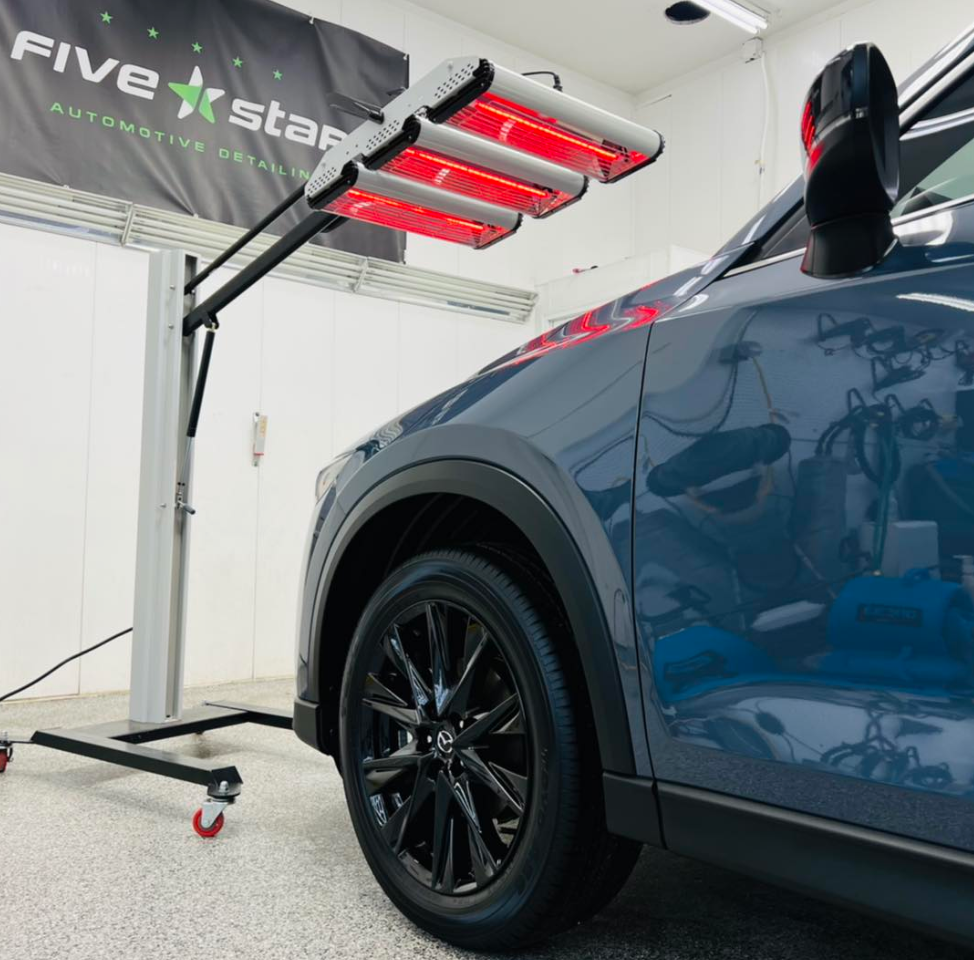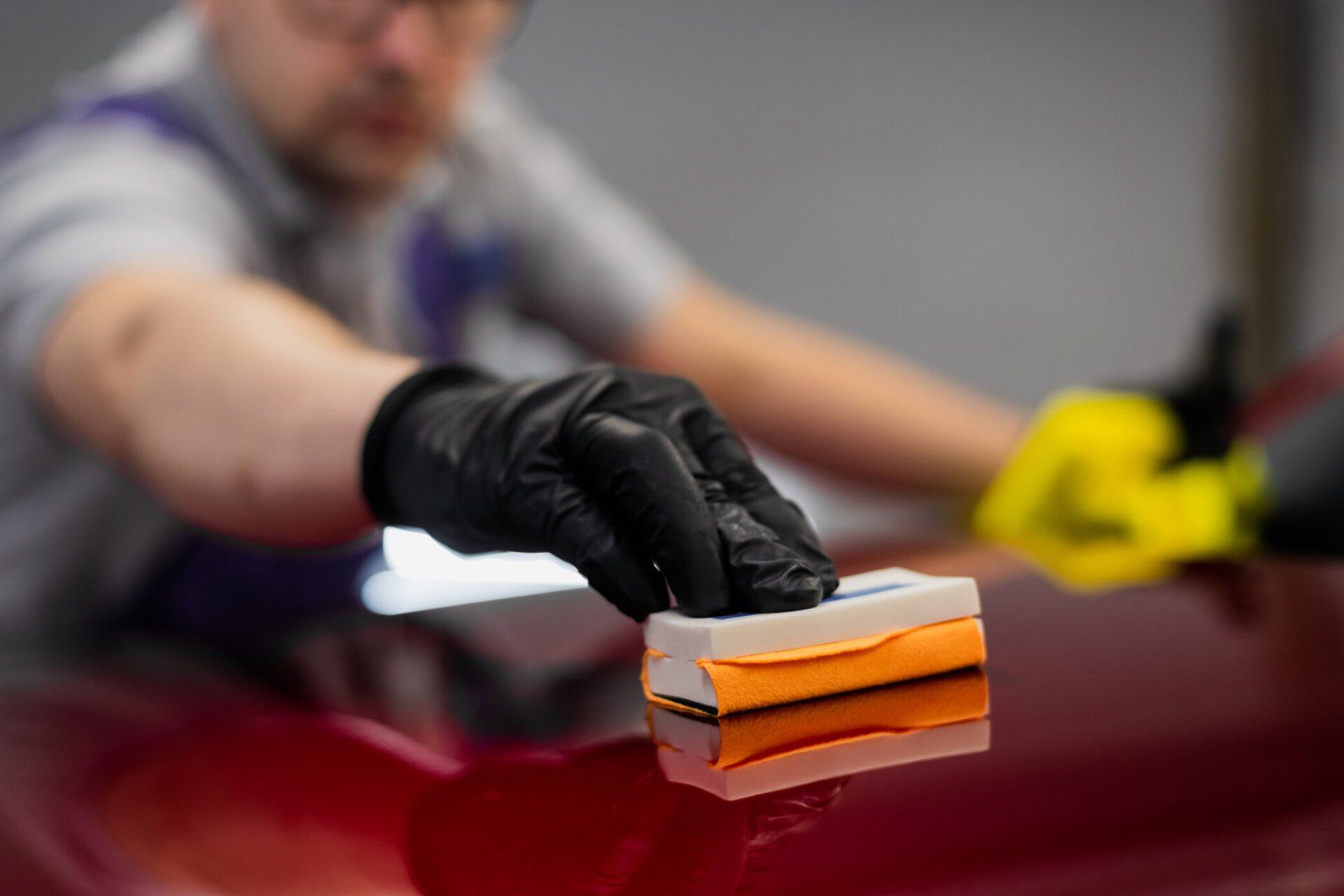Ceramic clear coating will be in high demand in the coming years as car owners recognize its unparalleled protection and glossy finish value and certified car detailers, who understand the value of this service in preserving and improving a vehicle's appearance, are particularly interested.
If you are on the fence about a ceramic coating, let us explain the pricing factors and why it is an investment rather than just another car expense.
So, where exactly is the sweet spot?
In this blog, we will go over the specific costs of applying a
ceramic coating to your vehicle. Prepare for a game-changer in your vehicle maintenance strategy with this comprehensive guide! Remember that there is an ideal solution for everything you need in vehicle care, including the removal of stubborn debris and dirt.
Cost Analysis of Ceramic Coating for Cars in Rochester, Minnesota
The number of layers applied and any preparation work required prior to application are two factors that can influence the cost. Before beginning the task, skilled car detailers ensure that the surface is completely free of debris.
In Rochester, Minnesota, a
ceramic coating installation ranges from $650 to $1,450, depending on the size and condition of the vehicle. While it may appear to be a significant upfront investment, ceramic coating protects your vehicle's paint for a long time and ultimately saves you money on future detailing and maintenance costs.
Understanding Ceramic Coating for Cars
Protecting the paint and finish of your vehicle is critical as a car owner. This is where ceramic car coating comes in. But exactly what is a ceramic coating?
In layman's terms, it is a liquid polymer that bonds with the surface of your car's paintwork, forming a protective layer that can improve the appearance and durability of your vehicle.
Unlike traditional waxes or sealants, ceramic coatings are intended to provide long-term protection against UV rays, harsh weather, chemical contaminants, and minor scratches.
It forms a strong bond with the clear coat of your car's paint, and depending on the quality of the product and proper maintenance, it can last for several years. Because of its hydrophobic properties, it effectively prevents water from soaking in and instead rolls off, while also preventing dirt and grime from adhering to it.
This makes maintenance and cleaning easier—imagine spending less time washing your car!
The Science Behind Ceramic Clear Coating
Now that we have a basic understanding of what ceramic coating is, let's take a closer look at the science behind it. Ceramic coatings are made up of nanoparticles that form chemical bonds with the surface they are applied to.
Silicon dioxide (SiO2) or titanium dioxide (TiO2) make up most of these nanoparticles. When they dry, they form a hard protective layer. When applied to the surface of your car's paintwork, these particles fill in microscopic imperfections and create a smooth, glossy finish.
Due to their small size and unique chemical properties, they bond tightly with the surface at a molecular level.
The chemical composition of ceramic coatings enables them to withstand high temperatures, resist oxidation, and provide excellent UV protection.
This helps to prevent fading or discoloration caused by prolonged exposure to sunlight.
Think of it like building armor for your car's paint—the microscopic nanoparticles create a strong shield that guards against environmental damage.
It's essential to note that the application of ceramic coating requires proper surface preparation and a careful application process to ensure optimal bonding. Many car owners opt to have this done professionally at a car detailing shop to guarantee the best results.
Having explored the basics and the scientific principles behind
ceramic coatings, let's now dive into the advantages they offer for your car.
Advantages of Ceramic Coating for Cars
Ceramic coatings have gained popularity among car enthusiasts and car detailers in Rochester, MN, and for good reason. Let us look at some of the benefits it provides. In addition to protecting your car's paint from the elements, it also shields it from dirt and grime and because it makes the surface hydrophobic, cleanup and maintenance are simplified.
Imagine driving through the rainy streets of Rochester, only to find your car looking spotless after just a simple rinse. Such an investment is certainly worth anything to preserve the luster and longevity of your beloved vehicle.
Furthermore, it enhances the appearance of your car by giving it a glossy and reflective finish. It can bring out a vivid color depth, making a noticeable difference in your car's appearance as it stands out on the roads of Minnesota. Professionally applied, whether it is on a vintage car or a modern sedan, ceramic coating adds that extra touch of luxury and elegance.
Moreover, this protective layer helps guard against UV damage, oxidation, and fading caused by exposure to sunlight. With the harsh weather conditions experienced in Minnesota throughout the year, including snowstorms and heavy rains or damage from flying debris that can crack windows, having this added layer of defense is invaluable.
In terms of maintenance, ceramic paint coating reduces the frequency of routine detailing as it prevents dirt and grime from adhering to the surface, much like getting a regular car wash. This not only saves time but also avoids potential damage from aggressive cleaning methods. By investing in a ceramic coating for your vehicle in Rochester, MN, you can enjoy these advantages and keep your car looking pristine for years to come.
One of the standout features of
ceramic coatings is their durability and long-lasting protection. Unlike traditional waxes or sealants that may wear off after a few months, ceramic coatings can provide significant protection for several years.
Durability and Protection
Ceramic clear coatings are engineered using advanced nanotechnology that forms a strong bond with the vehicle's paintwork. This bond creates a durable and protective layer that is resistant to scratches, swirl marks, UV rays, and chemical stains. This means that your car's paintwork remains shielded from everyday wear and tear caused by washing, driving, and exposure to the elements.
Additionally, it’s hydrophobic properties repel liquids, preventing them from seeping into the paintwork and causing damage. This makes it easier to clean your car, as water and contaminants simply slide off the surface. Investing in a ceramic coating not only preserves your vehicle's exterior but also maintains its resale value. A vehicle that has been well-cared for and has had its paint job protected will command a higher price from buyers.
Now that we understand the advantages of
ceramic coating and its durability and protection aspects, let's explore the cost considerations.
Evaluating the Ceramic Coating Costs
If you are thinking about getting a ceramic coating for your car, it is important to figure out how much it will cost. Ceramic clear coating is a long-lasting and effective way to protect your car's paintwork, but it is important to understand what factors contribute to the overall cost. By having a comprehensive understanding of these variables, you can make an informed decision that aligns with your budget and desired level of protection.
Now that we recognize the need to evaluate ceramic coating costs, let's delve into the key pricing variables that come into play.
Pricing Variables
Ceramic coatings can vary in price depending on a number of factors. These factors can differ depending on the service provider, the size and condition of your vehicle, and any additional services or benefits provided.
Let us take a look at some common pricing variables:
1. Vehicle Size: The size of your vehicle plays a significant role in determining the cost of ceramic coating. Larger vehicles, such as SUVs and trucks, require more ceramic coating materials and labor, resulting in higher prices when compared to smaller cars.
2. Paint Condition: The condition of your car's paintwork can affect the cost of the ceramic coating. If there are existing swirl marks, scratches, or other imperfections in the paint that need to be corrected before applying the ceramic coating, this extra step may incur additional charges.
3. Package Selection: The providers of ceramic coating services often offer different packages with varying levels of protection and longevity. Basic packages may offer standard protection for a shorter period of time at a lower cost, whereas higher-tier packages frequently offer extended durability and enhanced features at a higher price point.
The type of coating used in these packages may differ, and thus the coating cost may vary.
4. Additional Services: Some providers may include additional services in their package offerings, such as paint correction, interior detailing, or window tinting. These value-added services can increase overall coating costs while also providing a more comprehensive solution for your various vehicle needs.
5. Service Provider Reputation: Reputable ceramic coating providers who have established a track record of quality work and customer satisfaction may charge higher prices for their services. This premium pricing frequently reflects these providers' expertise, experience, and the type of quality products they use.
For instance, imagine you own a mid-sized sedan with average paint condition and opt for a basic ceramic coating package without any additional services. You might find a range of prices in the market, but it's essential to consider factors like reputation, coating cost and customer reviews rather than solely focusing on price.
A reputable provider may charge a slightly higher price than smaller or less-known competitors, but their expertise and quality may provide greater value in the long run.
Now that we have covered some of the key pricing variables to consider when comparing ceramic coating costs and types, let us move on to the next section, where we will talk about specific ceramic coating providers.
Ceramic Coating Providers in Rochester, Minnesota
There are a number of reliable options for installing ceramic coatings in Rochester, Minnesota. These auto detail shops specialize in applying high-quality ceramic coatings to the exterior of your vehicle, taking into account the type of vehicle and tailored coating cost to provide long-lasting protection and enhanced shine.
How much does it typically cost to have a ceramic coating installed in Rochester, Minnesota?
Here are three scientific facts about the cost of car ceramic coating:
- According to a study by Global Car Paints Market, demand for these services is growing at an annual rate of about 7% in North America, which includes U.S. states like Minnesota.
- A regional cost analysis by Auto Paint Job Central found that ceramic coating services in Midwest states like Minnesota are 5% less expensive than the national average due to lower labor costs compared to coastal states..
Before deciding on a ceramic coating service in Rochester, Minnesota, it is important to do some digging. Consider their reputation, customer reviews, coating cost, as well as the quality and type of products they use.
Elevate Your Car's Look and Value With Premium Ceramic Coating Installation in Rochester, Minnesota
If you're seeking to elevate your vehicle's aesthetic appeal and overall value, look no further than Five Star Automotive Detailing. To give your car unrivaled protection and a show-stopping appearance, we recommend having our premium ceramic coating installed.
Ceramic coating is a cutting-edge technique that makes use of sophisticated chemical formulations. These formulations form a strong, hydrophobic layer on the exterior of your vehicle, providing protection against environmental contaminants such as dirt, UV rays, and acid rain. In addition to protecting your car's paint, this high-tech shield will leave it with a gleaming, mirror-like sheen that will turn heads.
Our certified and experienced detailers meticulously apply ceramic coatings, taking pride in their attention to detail. This process ensures that your car not only looks great but also retains its value over time. You can skip the waxing and still enjoy lasting protection and a healthy glow. Invest in the future appearance and value of your car with premium ceramic coating installation in Rochester, MN.
Give us a call today or visit us online for more information and to schedule a free consultation!






